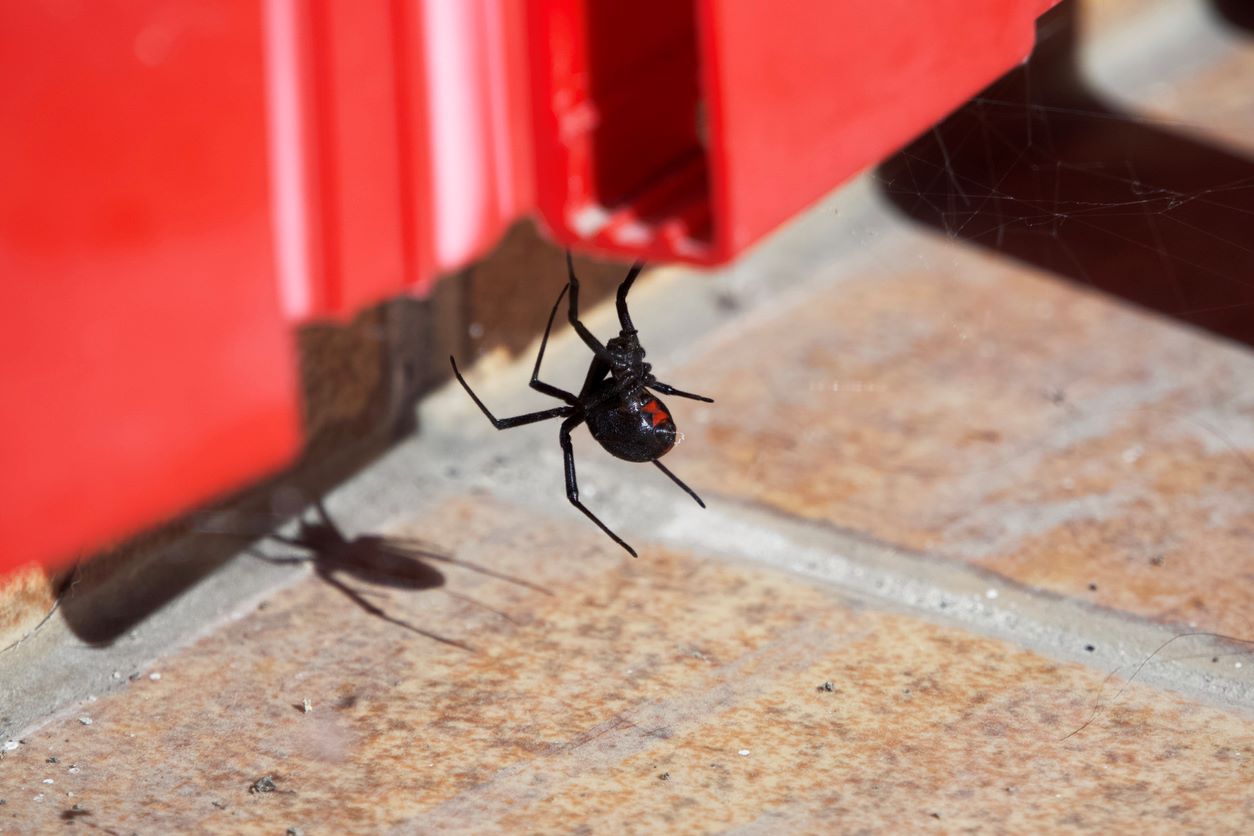Spiders may seem menacing but are relatively harmless to humans. However, with over 1,000 species of spiders in California alone, it can be challenging to determine which kinds may be creeping around your home. Thankfully, we’re here to help with an extensive spider identification guide.
Identifying dangerous spider species from harmless ones can give you the peace of mind you deserve and the confidence to contact your local spider control experts at Dewey Pest and Termite Control. You can always call us for immediate concerns or questions about spiders in California.
Identifying Dangerous Spiders in Your California Home
In reality, almost all spiders are venomous. Instead of identifying venomous versus non-venomous spiders, you need to understand which species are the most dangerous. Some spider species use aposematic coloring, or warning coloration, to communicate they’re venomous and should be avoided. There are several venomous spider species with unique colorings and markings to look out for throughout the state of California, including:
- Black widows
- Brown widows
- Desert recluses
- Yellow sac spiders
Black Widows
One of the more notorious dangerous spiders in California is the black widow. Full-grown black widows are usually around an inch to an inch and a half in size and have black bodies with a red hourglass-shaped mark on the underside of their abdomen. Do not approach a black widow if you see one–contact pest control professionals immediately.
These spiders pose a severe threat as the venom in their bites can cause fever, intense muscle cramps, and nausea in healthy adults. Black widow bite symptoms are often more severe and potentially fatal for older people, immunocompromised individuals, small children, and pets. If you or a loved one is bitten by a black widow, seek medical attention immediately.
Brown Widows
Another spider species to look out for in your home is the brown widow. A brown widow is mostly tan and black with light-colored bands in its legs, whereas a black widow is primarily black without markings on its legs. Both species feature an hourglass shape on their abdomens, but only a black widow’s hourglass is red. Brown widows have orange hourglass markings.
Although a brown widow’s bite is considered less dangerous than a black widow’s, it’s still painful and can cause uncomfortable physical symptoms. It’s best to play it safe and stay away!
Desert Recluses
While brown recluses are not active in California, there are other reclusive spiders to look out for in the Golden State. The most common recluse spider in California is the desert recluse. These pesky creatures are around a quarter to a half inch in size with sand-colored bodies. A desert recluse’s bite is necrotic, which means it can damage tissue around the bite mark. If you’re bitten by a desert recluse, the bite site will redden, blister, and possibly turn into a sore.
Yellow Sac Spiders
While not considered as dangerous as a desert recluse or black widow, yellow sac spiders are yet another venomous spider species you’ll find in California. Named after their distinct yellow bodies, yellow sac spiders are known to be active hunters who seek out their prey rather than catch them in webs. Their active hunting style makes them more likely to cross paths with humans and account for more human bites than any other spider species.
Harmless Spiders in Your House
Staying aware of what dangerous spiders you could encounter in your home is important, but you should also acknowledge that, despite some of the myths that can spread around, not all spiders are a threat. Some species are even beneficial to keeping other pest populations at bay.
American House Spiders
Among the spiders you can find in your California home is the American house spider. They can be identified by their yellow-brownish bodies and the dark rings along their legs. Although they can bite if provoked, they are not a major threat to humans. You can treat most mild spider bites at home, but if you have severe symptoms like stomach cramping or a fever, head to the emergency room or urgent care.
Jumping Spiders
Jumping spiders are another startling but relatively harmless arachnid you may find in your home. True to their name, jumping spiders use their strong legs to leap on and chase after their prey. They typically have black or brown bodies and a white dot on the back of their abdomen. A jumping spider’s bite is mild compared to the bites of other species, and they are generally not hostile.
How To Prevent Dangerous Spiders in Your Home
With the right information about dangerous spider identification, you can better safeguard yourself and your loved ones against bites and a potential infestation. Spiders will most likely move into your home during the cooler temperatures of the fall and winter. Try making your living space as unwelcoming as possible to these little intruders by:
- Vacuuming and cleaning in closets, under beds, and around garages
- Sealing any cracks or potential entryways
- Removing food sources that attract spiders’ prey
Preventive measures may be a start, but nothing beats the effectiveness of professional pest control services. The best team of technicians will not only conduct thorough and frequent inspections of your property but also apply specially tailored treatments.
Get Premier Spider Control Services With Dewey Pest and Termite Control
Looking for the best spider control team to effectively remove any unwanted visitors? Turn to Dewey Pest and Termite Control. For over 95 years, our team of professional technicians has been snuffing out spider problems across California. In addition to residential services, we proudly offer commercial services.Find your nearest Dewey Pest and Termite Control service branch or reach out to our team online to request our California spider control services today!



